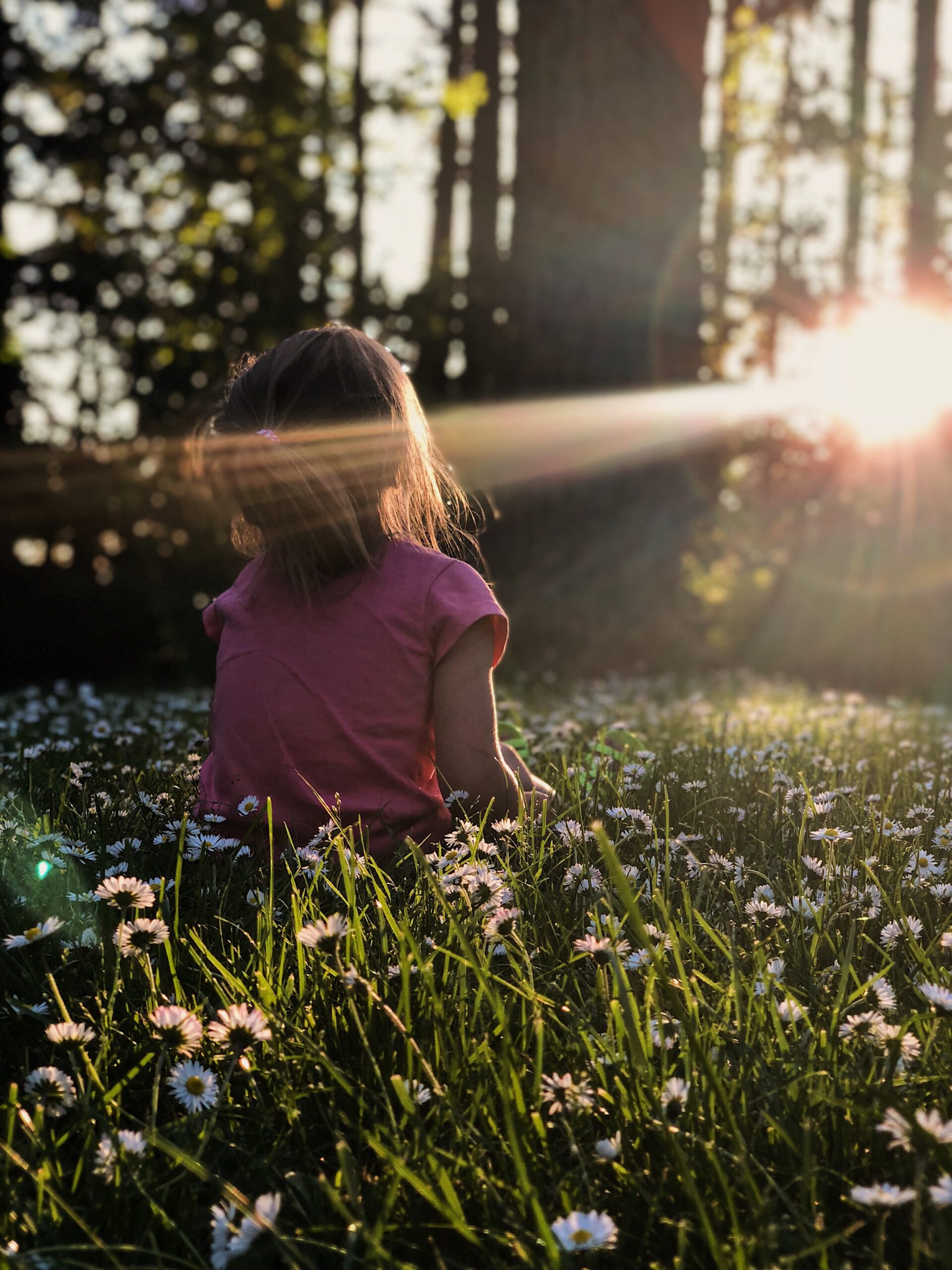
The use of mindfulness practices in schools has been growing for several years. Even better, it appears to be working. Kids behave better in school, do better academically and improve their overall focus. (mindfulschools.org) This is absolutely fantastic for all involved — kids, teachers and parents.
But we’re missing a mammoth opportunity by restricting this to mindfulness practices only. Teaching kids the underpinnings of mindfulness is monumentally important. In fact, it could be the most valuable information kids learn in the entirety of their K-12 education.
Bold statement? Yes. True? I wholeheartedly believe so. Here’s why.
Educating about our inner world
I’ve written extensively of my studying of Eckhart Tolle’s teachings so it’s not surprising that it was he who brought this subject to my attention. Eckhart, who studied at Cambridge and has a serious academic orientation, laments that we cram our kids’ heads with so much math, science, language, history and the like, but teach literally nothing about arguably the most significant thing they will need to navigate the rest of their lives: knowledge of their inner world and how and why it operates as it does.
I can see many people reacting to that with, “Whoa, Nellie. Inner world? I don’t know if I want schools teaching my kid about his/her inner world.” I get it. So let me state what helping kids with their inner worlds is NOT before I tell you what I think we should teach them.
Not about psychology or religion
It doesn’t mean dealing with psychology. That is for pediatric psychologists and counselors to deal with. It also doesn’t mean teaching kids religion or about spiritual traditions. That is for churches and temples.
So what does teaching kids about their inner worlds actually mean? I’ll answer that by doing two things. First, I’ll outline briefly what I see as the main problem facing kids today. And if there’s one word that best sums up that problem it would be anxiety.
The teen anxiety epidemic
Some amount of anxiety is normal for kids, especially those in junior high and high school. Bodies are developing, hormones are raging and brains are transforming.
I don’t know if I’ve ever been more self-conscious than when my forehead broke out in pimples in seventh grade. I had trouble enough as it was talking to girls, but when that happened? Forget about it. I took myself out of the game and sat on the proverbial bench until my skin cleared in eighth grade.
Today, though, anxiety among teenagers has risen to levels far beyond normal. According to the National Institutes of Health one in three kids between 13 and 18 will develop an anxiety disorder. And hospital admissions for suicidal teenagers has doubled in the past ten years. (healthychildren.org)
Why teens are so anxious
What’s causing this epidemic in teen anxiety? Social media and the pressures it places on teens is a big one. As is academic pressure to do well and get into a big name college. Add to that the effect that school shootings and terrorist incidents put on kids’ overall feeling of safety and it becomes understandable why this generation of teens is so anxious. The only one of these three causes I had to deal with as a teen in the late 70’s and early 80’s was academic pressure and even that wasn’t as big a deal as it is today.
And how are we treating kids with anxiety? The more serious cases are treated with therapy (especially Cognitive Behavioral Therapy) and antidepressants. Studies show that 80% of teens treated with both of these therapies showed significant reduction or outright elimination of their anxiety after twelve weeks.(healthychildren.org)
Mindfulness and meditation practices also help treat anxiety. But it would do teens a lifetime of good if they understood the basics behind why these practices make them feel better. Why? Because the better they understand them the more likely they are to incorporate meditation and mindfulness into their lives for the long haul. And THAT would be profoundly beneficial to those kids and to the world at large.
So what are these underpinnings of mindfulness I propose should be taught? Three main areas: homo sapiens evolutionary history, basic brain science and the rudiments of the human psyche. None of these would require in depth study. The basics will do. Let’s explore each of the three.
1. Our Homo Sapiens Brains
After 5 million years of evolving from primates, around 200,000 years ago our species, Homo Sapiens, arrived on the scene. For the next 190,000 years our ancestors lives were pretty simple: roam around hunting for food and gathering berries, nuts and other edibles. That’s it.
What’s important for our purposes is that that life was lived pretty much lived in the moment; as such, our brains evolved accordingly. In other words, the amygdala, the emotion center of our brain described below, sounded the alarm for valid concerns, like that saber-toothed tiger trying to turn you into his version of a prehistoric Happy Meal.
The agricultural revolution changes everything
Then 10,000 years ago the most important revolution in the history of humankind occurred: We figured out how to grow food and domesticate animals. The result? We stopped hunting, gathering and roaming and stayed put.
Over the successive millennia this resulted in villages, then cities, then empires. In the last hundred years and change, it meant telephones, airplanes, computers, the internet and then in 2007 the iPhone.
What has that done to humankind, especially teenagers? It has made us crazy. Why? Here’s the brilliant mathematical equation I devised that explains this phenomenon: Prehistoric Brains + Modern Problems = Humanity Insanity.
This is absolutely true. Our brains, which are virtually the same as they were 100,000 years ago, evolved to live off nature. If you saw a berry on the ground, you picked it up and ate it. If you killed a woolly mammoth, you didn’t cut it up, fill a bunch of plastic bags and store it in your freezer. You ate it.
What our brains were NOT programmed to do
These brains of ours that were programmed to deal with present moment living essentially malfunction when they are forced to face things like mortgage payments, college preparatory exams and how many people “liked” your Facebook post about your super cool spring break trip to Jamaica with your three besty high school girlfriends (“The dreadlocks photo alone should have gotten 100 likes. 27? WAHHHH!”).
Our attention 50,000 years ago was on what was right in front of us. That same attention now gets hijacked by our overactive minds into involuntary thoughts about that mortgage payment, upcoming SAT test and lack of Facebook likes…literally hundreds of times a day.
We need to teach our teens why their minds produce all this needless anxiety. Because after doing so, we then turn to the good news about what meditation and mindfulness do to counteract the deficiencies of our obsolete brains.
2. The Brain
This is a massive subject, but for our purposes it comes down to explaining two areas of the brain: the aforementioned amygdala and the prefrontal cortex (PFC). The amygdala is the emotion center of the brain and is part of the more primitive limbic system. It evolved to help alert us to danger and whether we should fight or flee…again, if that saber-toothed tiger appeared out of nowhere.
The problem is that our amygdala has not evolved with our life circumstances. So when a teen has a panic attack the morning of taking their SAT tests, that is their amygdala overreacting to something it thinks is actually life threatening. A large, overactive amygdala is at the heart of most anxiety issues.
Studies at Harvard have shown that meditation has the effect of reducing the size and activity of the amygdala. Teens should be taught that.
The prefrontal cortex — the cool cucumber
The prefrontal cortex is the newest and most advanced part of the human brain. Located behind the forehead and eyes, the PFC is responsible for a wide variety of executive functions that include managing emotional reactions and impulse control. Most important for this discussion, the PFC acts as an inhibitory influence on its more primitive relative, the amygdala.
What does that mean? If you look down in your garden and see what looks like a snake, your amygdala sends signals throughout your body to beware. When, upon focusing in, you realize that it’s only a garden hose wrapped up, it is your PFC that tells the amygdala and the rest of your body to calm down. False alarm.
Similarly, if a teen awakens tied up in knots because they have an AP English exam that morning, it is their PFC that tries to talk their “my life is over unless I get an A on this test” amygdala down from the ledge.
After teaching teens this, we then expose them to the Harvard studies showing that meditation not only shrinks the worry wart amygdala, it also thickens the walls of the cool cucumber PFC. The net effect of all this is an overall reduction in anxiety. Teens should know this.
3. The Two Selves
This third topic is the most important, but also the most problematic, the why of which I’ll get to shortly. First, what are the two selves?
Eckhart Tolle’s I/Myself epiphany
I’ll explain by using the epiphany Eckhart Tolle had at age 29 one night while mired in a suicidal depression. While reeling in severe psychic pain the thought came to him, “I don’t know if I can live with myself anymore.” Right then, it occurred to him, “Hold on. Who is this ‘I’ and who is this ‘myself’? They seem to be two separate entities.”
And, of course, they are. They’re the two selves. The ‘I’ he refers to is the conscious self. This is our true self. It’s the self that exists when we are rooted in the present moment and not lost in a stream of thoughts. It’s our consciousness.

The ‘myself’ that Eckhart said he couldn’t live with is the egoic/conditioned self that constantly pulls our attention away from the conscious/present self into our thought factory mind. This egoic self is extremely powerful and dominates the conscious self in most people. And boy does it ever dominate darn near 100% of teenagers’ psyches.
So what do we teach teens about these two selves? Some version, obviously more expanded, of what I just wrote.
A potentially problematic issue
This could be problematic, as you might imagine, because some parents might view this as an intrusion into their religious or spiritual beliefs. The fact is that this two selves concept lies at the heart of Buddhism, Hinduism and other spiritual teachings. But there’s no reason it needs to be taught as part of any religion or tradition.
This two selves concept could simply be taught as something that is inherent in humans. And that meditation and mindfulness serve to strengthen the real, conscious self and weaken the powerful hold that the egoic self exerts over teens and the rest of us.
Why would teaching teens about this be helpful? Because they’ll start to recognize that all those crazy thoughts and feelings they’re having aren’t who they are. And the more they meditate and practice mindfulness the better they will get at freeing their conscious selves from the clutches of their egoic selves, which will give them the all-important ability to observe their anxious thoughts and feelings rather than become consumed by them.
The net result of all of this? A whole lot less anxiety for our teenagers.
What age group should be targeted?
Who should we teach all this to? Again, junior high and high schoolers. Most elementary school students aren’t developed enough to absorb this material so we should continue their meditation and mindfulness practices as many schools currently are.
Where should it be taught? The likeliest candidate is some version of a health class, which most schools teach. My seventh grade son takes a life skills class which also seems germane to the material.
Unlocking the door to ourselves
Frankly, I don’t care where it is taught, the point is, it should be taught. Developing the ability to calm the mind and step outside and observe our chattering minds rather than get swept up in them is, arguably, the most valuable skill any human can learn. Calming our minds doesn’t just make us feel more peaceful and stable; it also unlocks the door to the room where the beautiful, brilliant, creative being resides in all of us. A being most people never access because it is squelched by our overactive minds.
So what’s the takeaway for this entire piece? This: If our teenagers not only practiced meditation and mindfulness but understood the foundations of how they work and why they are so beneficial, a big chunk of them would carry these practices with them for the rest of their lives.
I can’t imagine anything more valuable for our teens and for our world.


0 comments
Write a comment